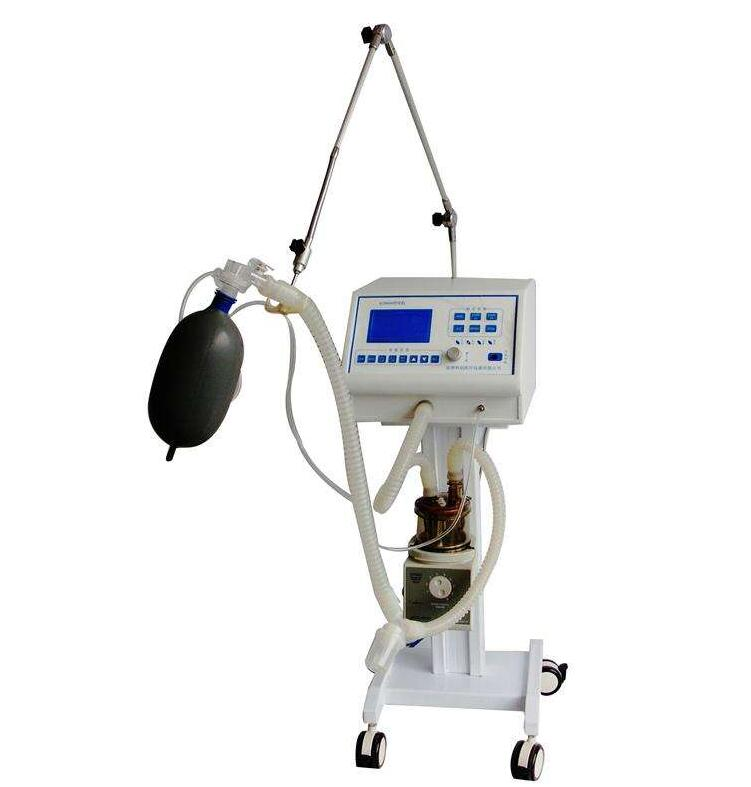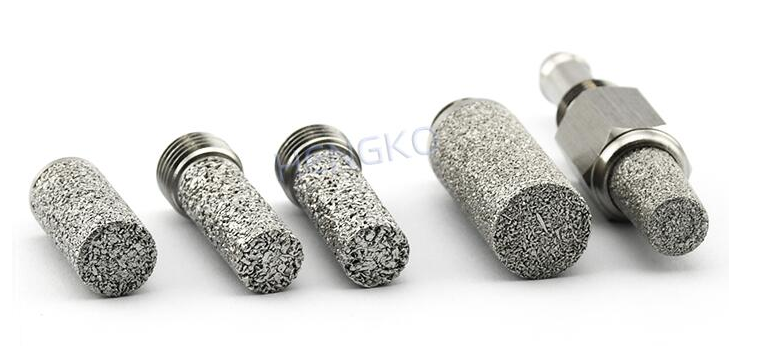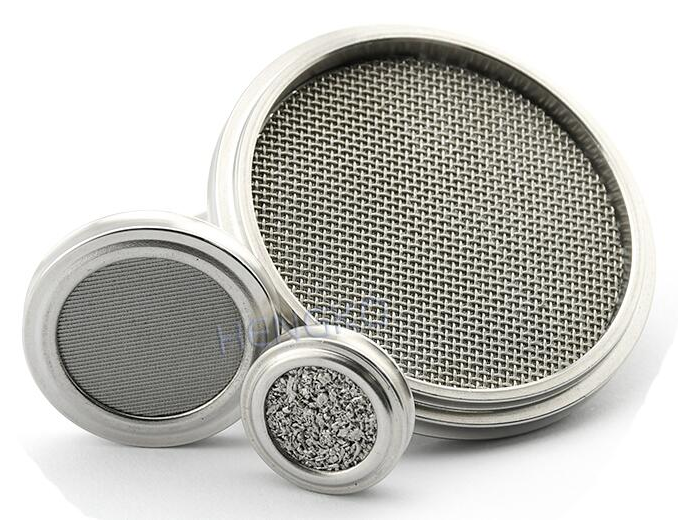What is ventilator?
In short, The ventilator is one of the important treatments to cure patients with respiratory failure. The main function of a ventilator is assisted machine ventilate, to help patients breathe normally. When people have difficulty breathing, the ventilator can imitate people’s breathing rate and send different oxygen content gases (21%-100%) to lung and exchange the gases regularly to help patients improve the station of hypoxia, carbon dioxide retention.
A ventilator, also known as a respiratory machine or breathing machine, is a medical device that helps patients who are unable to breathe on their own. This can be due to an illness, such as severe pneumonia or respiratory failure, or because they are undergoing a medical procedure that requires them to be sedated and have their breathing controlled.
Ventilators work by pushing air—enriched with extra oxygen—into the lungs, then allowing it to flow back out again. The process helps the patient take in enough oxygen and expel enough carbon dioxide, two critical elements of the breathing process.
Ventilators can be life-saving devices in intensive care and emergency medicine. They are often used in cases of respiratory failure—a condition where the amount of oxygen in the bloodstream becomes too low or the level of carbon dioxide becomes too high. This can happen due to many different health conditions, including severe lung diseases, neuromuscular disorders, and major trauma.
In summary, ventilators play a crucial role in the medical field. They can mean the difference between life and death for patients who can't breathe on their own. Understanding how they function and their components, such as sintered metal filters, is vital for those involved in their use and maintenance.
Basic Working Principle of Ventilators
A ventilator is a machine that mechanically assists or replaces spontaneous respiration. It aids in the exchange of oxygen and carbon dioxide, effectively simulating the physiological process of breathing.
Different Types of Ventilators
Ventilators come in various shapes, sizes, and types. They are typically classified based on their functionality, mechanism of ventilation, and the place where they are used. Here are some common types:
1. Invasive Ventilators
These are the ventilators used in critical care settings like intensive care units (ICUs). They provide mechanical ventilation to patients who are sedated or have had their ability to breathe severely compromised. Invasive ventilation requires a tube (endotracheal or tracheostomy tube) inserted into the patient's airway.
2. Non-Invasive Ventilators
Non-invasive ventilators help patients breathe by supplying pressurized air via a face mask, nasal mask, or mouthpiece. These are often used for patients with less severe breathing difficulties, such as those with chronic obstructive pulmonary disease (COPD) or sleep apnea.
3. Portable or Transport Ventilators
These are lightweight, compact ventilators designed for mobility. They are often used during patient transportation within or outside the hospital, like transferring a patient from an ambulance to an emergency department.
4. Home Ventilators
Also known as domiciliary ventilators, these are designed for patients who need long-term ventilation support at home. These machines are usually less complex than ICU ventilators and are designed to be user-friendly for patients and caregivers.
5. Neonatal Ventilators
Designed specifically for the unique physiological characteristics of newborns and infants, neonatal ventilators are used in neonatal intensive care units (NICUs). They have specific modes and safety features to ensure gentle and safe ventilation for the newborns.
Each type of ventilator serves a unique purpose and is designed to cater to specific patient needs. The type used will depend on the clinical condition and the level of support the patient requires.
Ventilators can be classified in many different ways. There are the various name of ventilators according to different ways of classification. For application, a ventilator can be divided into a medical ventilator and a household ventilator. A medical ventilator is used under the monitoring of medical workers for the patients with respiratory failure and Barotrauma as well as the patients who need breathing supports, breathing treatment and first-aid and resuscitation. Household ventilator is used to relieve the snore, the hypopnea and the sleep apnea when patients sleeping. It used for the people with mild respiratory failure and respiratory insufficiency to assist treatment. It is not only used in a home environment, but also used in a medical institution.
It is divided into invasive ventilator and non-invasive ventilator according to the connection. An invasive ventilator is a positive pressure mechanical ventilation way by building the artificial airway (Nasal or endotracheal intubation and tracheotomy). An invasive ventilator is usually used in ICU to cure patients with severe respiratory failure. Non-invasive ventilators build the artificial airway by the means of a muzzle mask, nasal mask, nasal tube, etc. It mainly used in the intensive home care unit, common ward and family to treat the patients with mild to moderate respiratory failure.
Sintered Metal Filters and Their Role in Ventilators
What is Sintered Metal Filters
Sintered metal filters are a special type of filter made from metal powders that have been heated (or sintered) to form a solid structure. These filters are renowned for their durability, strength, and precision.
Importance of Sintered Metal Filters in Ventilators
A key component in any ventilator system is the filter. It's crucial because it's responsible for purifying the air that's delivered into the patient's lungs. Now, if we think about the kinds of things that might be in the air – dust, bacteria, viruses – we realize just how important that role is.
Why Sintered Metal Filters?
Sintered metal filters stand out for a few reasons. One, they're incredibly durable. That's because they're made of metal, which can withstand a lot of wear and tear. Two, they're very efficient at filtering out small particles, thanks to the sintering process that creates a uniform and consistent pore size.
The importance of using sintered metal filters in ventilators cannot be overstated. Not only do they filter the air, but they also protect the delicate machinery within the ventilator itself. If dust, for example, were to get into the ventilator, it could damage its components, causing it to fail.
Safety and Quality Assurance
Another essential function of the sintered metal filter in a ventilator is the assurance of safety and quality. These filters ensure that only pure, clean, and safe air gets delivered to the patients. This is critical, especially in the context of a clinical setting where the exposure to harmful bacteria, viruses, or contaminants could lead to complications or exacerbate the patient's condition.
In conclusion, the role of sintered metal filters in ventilators is crucial. Their durability, efficiency, and the safety assurance they provide make them an integral component in the design and operation of ventilators.
How Sintered Metal Filters are Used in Ventilators
Sintered metal filters play a crucial role in the function and efficiency of a ventilator. Their main function is to filter and purify the air that is delivered to the patient. But how does this work in practice? Let's break it down:
Air Intake and Filtration
As the ventilator takes in air, this air first passes through the sintered metal filter. The filter's job is to remove any particulates, bacteria, viruses, or other contaminants from the air.
The structure of the sintered metal filter, which has been formed through a process of heating metal particles until they bond together, is key to its effectiveness. This process creates a highly porous material with consistent and precise pore sizes. As a result, the filter can trap and remove even the tiniest impurities while allowing air to pass through.
Protection of Ventilator Components
Sintered metal filters also protect the ventilator's internal components. By removing contaminants and particulates at the air intake stage, they prevent these materials from reaching and potentially damaging the sensitive machinery within the ventilator.
Maintenance and Sterilization
Another advantage of using sintered metal filters in ventilators is that they are robust and reusable. They can withstand high temperatures, making them suitable for sterilization processes between uses. This capability is especially valuable in a healthcare setting, where maintaining sterile equipment is critical.
In summary, sintered metal filters are used in ventilators to filter the incoming air, protect the ventilator's internal components, and uphold stringent hygiene and sterilization standards. Their unique properties make them an invaluable component in the operation of these life-saving devices.
In terms of a professional medical equipment manufacturer, it will take more than 40 days to produce ventilation due to their extremely complex inner construction. It contains thousands of accessories, there is a small but essential accessory- ventilator filter disc between them. Filter disc is used to filter dust and impurity to put clean o2 into patients’ lungs as the o2 through the pipe.
There are serious of many specification and model ventilator filters and filter disc for your selection. Our ventilator is made of medical 316L stainless steel material, has the advantage of sturdy and durable, accurate ventilation aperture, uniform pore size, corrosion resistance, good breathability and exquisite appearance. HENGKO is the main supplier of the micro-sintered stainless steel filters and high-temperature porous metal filters in global. We have many kinds of sizes, specifications and types products for your choose, multi-process and complicated filtering products also can be customized as your requirement.
Advantages of Sintered Metal Filters in Ventilators
1. High Filtration Efficiency
The precision of the pore size in sintered metal filters, thanks to the sintering process, ensures a high level of filtration efficiency. This quality enables the filters to effectively remove even microscopic particles, providing pure air for patients.
2. Durability and Longevity
Sintered metal filters are extremely durable. Made from metals like stainless steel or bronze, these filters can withstand high pressures and temperatures, making them resistant to wear and tear. This longevity reduces the need for frequent replacements, leading to cost savings in the long run.
3. Resistance to Corrosion
The metals used in the sintering process are typically resistant to corrosion, making these filters ideal for use in environments where they may be exposed to various chemicals or moisture.
4. Heat Resistance
Sintered metal filters can withstand high temperatures, making them suitable for sterilization processes. This is crucial in medical settings where maintaining sterile equipment is vital to prevent infections.
5. Regenerable and Reusable
Sintered metal filters can be cleaned and reused, making them an environmentally friendly choice. Cleaning can often be done through backwashing, ultrasonic cleaning, or other methods.
6. Consistent Performance
The consistency in the pore size of sintered metal filters guarantees a reliable and steady filtration performance, ensuring the delivery of clean air to patients at all times.
In conclusion, the advantages of sintered metal filters in ventilators are manifold. Their high efficiency, durability, corrosion and heat resistance, reusability, and consistent performance make them an ideal choice for ventilators, significantly contributing to the safety and effectiveness of these critical medical devices.
FAQ
1. What is a sintered metal filter and how does it work in a ventilator?
A sintered metal filter is a type of filter created from metal powders that have been heated and pressed together in a process known as sintering. This process forms a robust, porous structure with precise and consistent pore sizes, which is ideal for filtration purposes. In a ventilator, this filter is used to purify the air that's delivered into the patient's lungs. It does this by trapping and removing particulates, bacteria, viruses, or other contaminants from the air, ensuring that only clean, purified air reaches the patient.
2. Why are sintered metal filters preferred in ventilators over other types of filters?
Sintered metal filters are preferred in ventilators due to their numerous advantages. Their high filtration efficiency, owing to the precise pore size, ensures that they effectively remove even the tiniest impurities. They are also extremely durable, able to withstand high pressures and temperatures without degrading, which increases their lifespan and reduces the need for frequent replacements. Additionally, they can be cleaned and reused, which is beneficial from an economic and environmental standpoint.
3. Can sintered metal filters in ventilators be sterilized?
Yes, sintered metal filters can be sterilized. One of the advantages of these filters is their ability to withstand high temperatures. This makes them suitable for various sterilization methods, such as autoclaving or dry heat sterilization, which are crucial in a healthcare setting to maintain sterile equipment and prevent infections.
4. What metals are typically used to create sintered metal filters for ventilators?
The metals used to create sintered metal filters for ventilators vary, but stainless steel and bronze are common choices. These metals are selected for their durability, corrosion resistance, and ability to withstand high temperatures, all of which are necessary attributes for filters used in medical devices like ventilators.
5. What are the maintenance requirements for sintered metal filters used in ventilators?
Sintered metal filters require regular maintenance to ensure their effectiveness and longevity. This typically involves cleaning to remove trapped particles and sterilization to eliminate any potential contaminants. Cleaning methods may include backwashing, ultrasonic cleaning, or using a suitable cleaning solution. The filters can also be replaced as needed, although their robustness and reusability often minimize the need for frequent replacements.
In conclusion, sintered metal filters play a crucial role in the operation of ventilators, ensuring the delivery of clean, purified air to patients. Their durability, efficiency, and reusability make them an invaluable component of these life-saving medical devices.
Take Your Ventilator Performance to the Next Level with HENGKO
Do you need a high-quality sintered metal filter for your ventilator? Look no further! HENGKO, a leading name in the industry, specializes in providing top-notch sintered metal filters tailored to your specific needs.
Not only do we offer exceptional quality, but we also take pride in our commitment to customer satisfaction. Our expert team is ready to assist you with all your OEM needs, ensuring you get the perfect fit for your ventilator systems.
Why settle for less when you can have the best? Contact us now at ka@hengko.com and start enhancing the performance of your ventilators with HENGKO's superior sintered metal filters.
Post time: Aug-13-2020






